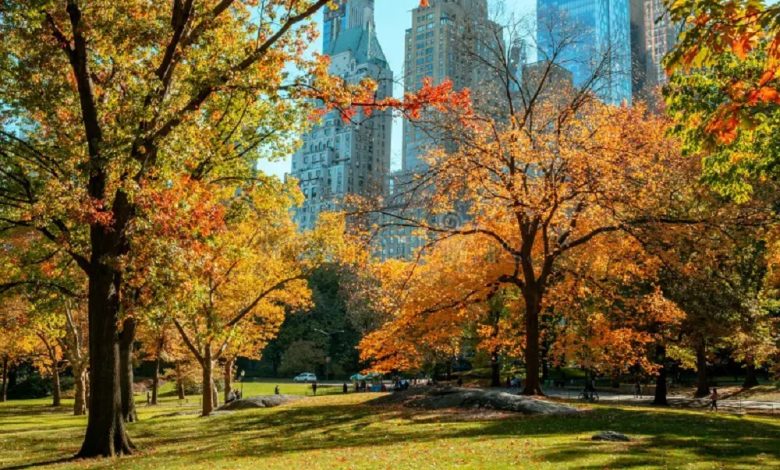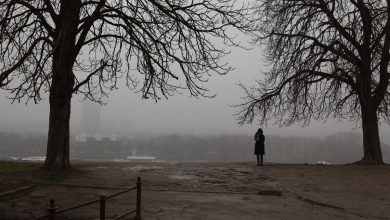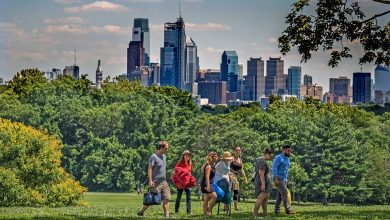New York City’s Fall Foliage 2025: Where to See Autumn’s Most Beautiful Colors
From Central Park to Staten Island’s hidden gems, explore the best spots to witness New York’s dazzling fall transformation before winter arrives.

As autumn reaches its peak, New York City and its neighboring regions in New Jersey are putting on a breathtaking display of fall foliage. Residents and visitors alike find themselves immersed in a stunning seasonal palette that turns the urban landscape into a vibrant mosaic of reds, oranges, yellows, and golds. Yet this dazzling natural spectacle is fleeting—experts warn that the peak viewing period is quickly coming to an end, urging everyone to experience the colors before winter’s chill sets in.
Across the five boroughs, tree-lined streets and vast city parks are bursting with autumn hues. The transformation began subtly in early October when the elm trees were among the first to signal fall’s arrival with soft shades of yellow and red. This graceful progression continues throughout November, as the mighty oaks—often the last to join the fall chorus—shift to rich browns that can last into the early winter months.
According to forestry experts, there is an undeniable sense of romance in seeing the city wrapped in such brilliant color. While there is a touch of nostalgia knowing winter is near and the leaves will soon fade, the season’s finale is seen as a grand farewell—an explosion of natural fireworks before the calm of winter’s slumber.

The Science Behind Nature’s Art
The transformation is rooted in science. As days grow shorter and sunlight wanes, trees gradually stop producing chlorophyll—the pigment responsible for their green color. When chlorophyll fades, the yellow and orange pigments, long hidden beneath, are revealed. Meanwhile, trapped sugars in the leaves create the red and purple tones that give autumn its dramatic color spectrum.
Each tree species adds its unique brushstroke to this seasonal masterpiece. After the elms, locust trees turn bright yellow before their delicate leaves fall softly, carpeting the ground in gold. Red and sugar maples light up the skyline with fiery reds and coral pinks, while black tupelo trees shift to vivid crimson. The fan-shaped ginkgo leaves bring a touch of glowing gold to the mix, standing out in city streets and park pathways.
Among the last to change are the sweetgum trees, famous for their star-shaped leaves. They offer a mesmerizing mix of yellow, orange, purple, and green all at once. Central Park alone is home to over a hundred sweetgum trees, with a particularly beautiful cluster near the historic Blockhouse in the North Woods. These trees can also be spotted in Cunningham Park in Queens and Staten Island’s Wolfes Pond and Blue Heron Parks. For curious visitors, the city’s interactive tree map helps identify and locate different species. Some mighty oaks even retain their autumn coats into spring, offering a lingering reminder of fall’s splendor.

Where to See the Magic
Experts emphasize the poetic symbolism of fall—a gentle reminder of the passage of time and the beauty found in change. For those eager to savor this fleeting beauty, there are countless places to visit. The iconic Central Park remains the crown jewel for leaf peeping, but lesser-known gems provide equally striking views. The iron watchtower at Marcus Garvey Park in Harlem offers a stunning vantage point over Manhattan’s colorful canopy, while Forest Park and Kissena Park in Queens, Prospect Park in Brooklyn, St. Mary’s Park in the Bronx, and Conference House Park in Staten Island each provide unique autumn landscapes.
Celebrate the Season
To make the most of this fleeting beauty, local park departments are hosting a variety of free fall foliage events across the five boroughs—from guided bike tours through colorful trails to art workshops inspired by the season’s palette. With so many spectacular spots to explore, the message is simple: seize the moment and step outside. Some colors will last into late November, but nothing rivals the brilliance of what’s unfolding right now.



